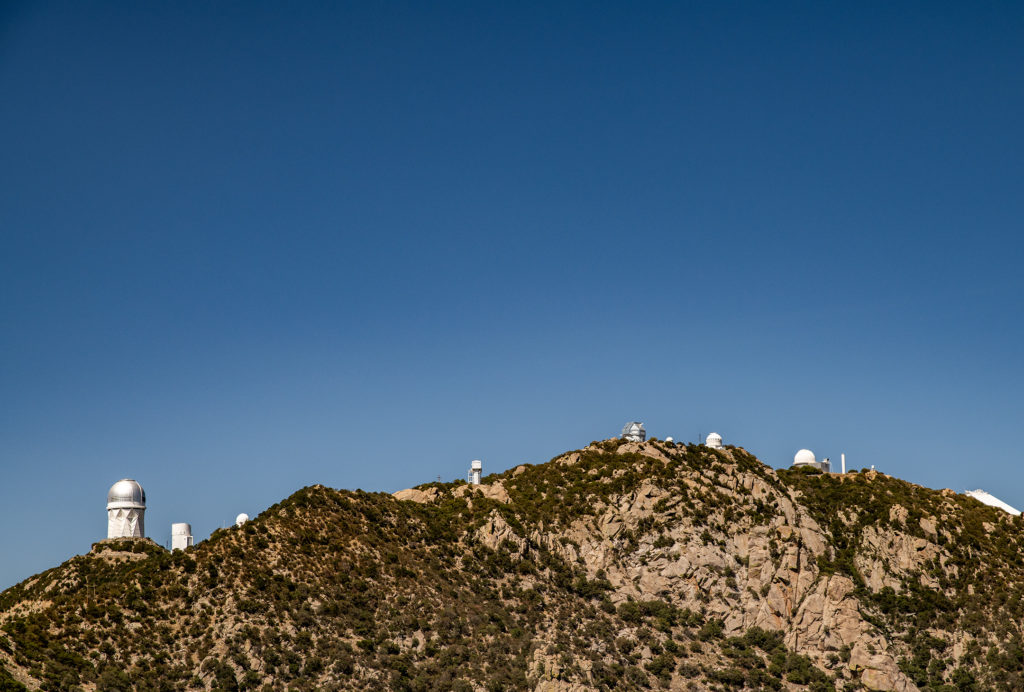
When we look at a galaxy in the sky, we cannot immediately infer its distance from us: it might be a large, luminous galaxy far away, or a small galaxy nearby. But by measuring their redshifts we can sort galaxies by distance and turn our flat image of the sky into a 3D map.
Redshift describes how our observation of light from more distant galaxies, for example, is shifted to redder frequencies. Similarly with sound waves, the noise of a train moving away from us is shifted to lower frequencies.
Since the 1970s, surveys of the clustering of galaxies via redshifts have become a powerful tool for mapping the universe’s contents and laws. What began with just a few thousand galaxies developed with larger samples in the late ’70s and ’80s, and then expanded to hundreds of thousands to millions of galaxies (notably the Two-degree Field Redshift Survey and Sloan Digital Sky Survey) in the past 20 years, is now reaching a new scale.
Over its 5-year mission, DESI will obtain spectra for roughly 30 million galaxies over one-third of the night sky, mapping a huge volume of space stretching over 11 billion years into the past.
These maps of the universe reveal a wonderful pattern in the distribution of galaxies, with strong clustering on scales of a few million light-years and small but detectable fluctuations on scales of hundreds of millions of light-years. These patterns are now known to have initiated in the very early universe—likely in the first fraction of a second after the Big Bang. They then grew due to the action of gravity: more overdense regions felt more gravitational attraction that steadily overcame the cosmic expansion, leading to yet higher overdensities. From the tiny initial ripples, gravity caused such structure to grow in amplitude, producing accumulations of matter that formed galaxies, and also larger accumulations that we can detect in the maps.
The structure on large scales is particularly useful for cosmological investigation because it presents a relatively unchanged view of the perturbations as they existed long ago, and because it provides a simple way for us to measure the ongoing effects of gravity on scales of hundreds of millions of light-years. It is these opportunities that provide the key motivation for DESI.
Using maps of the universe’s large-scale structure involves the development of statistical analyses to measure how the galaxy distribution differs from a random scattering of points. Scientists’ cosmological theories make detailed predictions for these statistical properties.
However, no map is perfect because the instruments, atmosphere, and even Milky Way environment create other sources of apparent fluctuations. Removing these mistakes, constructing the statistical tests, and estimating accurate errors in measurements requires great care, particularly at the scale of the DESI survey. The DESI science collaboration is assembling the needed tools, based on decades of progressive development in the field of large-scale structure and execution of galaxy redshift surveys.







